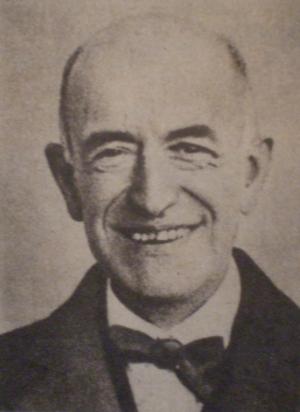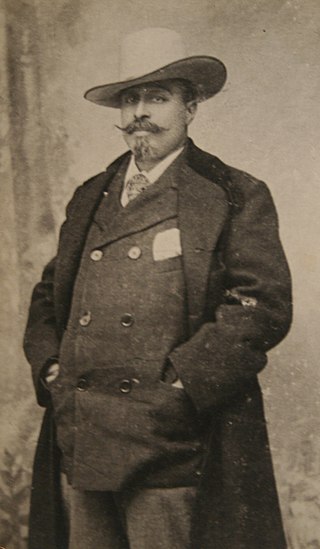
Astor Pantaleón Piazzolla was an Argentine tango composer, bandoneon player, and arranger. His works revolutionized the traditional tango into a new style termed nuevo tango, incorporating elements from jazz and classical music. A virtuoso bandoneonist, he regularly performed his own compositions with a variety of ensembles. In 1992, American music critic Stephen Holden described Piazzolla as "the world's foremost composer of Tango music".

Tango is a style of music in 2
4 or 4
4 time that originated among European and African immigrant populations of Argentina and Uruguay. It is traditionally played on a solo guitar, guitar duo, or an ensemble, known as the orquesta típica, which includes at least two violins, flute, piano, double bass, and at least two bandoneóns. Sometimes guitars and a clarinet join the ensemble. Tango may be purely instrumental or may include a vocalist. Tango music and dance have become popular throughout the world.

Manuel de Falla y Matheu was an Andalusian Spanish composer and pianist. Along with Isaac Albéniz, Francisco Tárrega, and Enrique Granados, he was one of Spain's most important musicians of the first half of the 20th century. He has a claim to being Spain's greatest composer of the 20th century, although the number of pieces he composed was relatively modest.

Candombe is a style of music and dance that originated in Uruguay among the descendants of liberated African slaves. In 2009, the United Nations Educational, Scientific and Cultural Organization (UNESCO) inscribed candombe in its Representative List of the Intangible Cultural Heritage of Humanity.
The Conservatorio Nacional Superior de Música is the national music conservatory for Argentina and it is located in Buenos Aires.

The Chacarera is a dance and music that originated in Santiago del Estero, Argentina. It is a genre of folk music that, for many Argentines, serves as a rural counterpart to the cosmopolitan imagery of the Tango. A dance form played by contemporary musicians as soloists or in small ensembles of voice, guitar, violin and bombo drum, the Chacarera is often legitimized by its “origin” in the remote province of Santiago del Estero.

Afro-Argentines are people in Argentina of primarily Sub-Saharan African descent. The Afro-Argentine population is the result of people being brought over during the transatlantic slave trade during the centuries of Spanish domination in the region and immigration from Africa.

Enric Morera i Viura was a Catalan musician and composer from Spain.

Juan José Castro was an Argentine composer and conductor.

Julio de Caro was an Argentine composer, musician and conductor prominent in the Tango genre.

Zenón Rolón was an Afro Argentine musician and composer. Born in Buenos Aires, he composed approximately 80 works including operas, operettas, zarzuelas and sacred music. Rolón also founded a music publishing company which published numerous works by contemporary Argentine composers. Many of his manuscripts are now held by the Instituto Nacional de Estudios de Teatro, in Buenos Aires, and by the Museo Histórico de Morón, the city where he died at the age of 45.
Carlos Posadas (1874-1918) was a musician dedicated to Argentine tango in the 19th century.
Manuel G. Posadas was an Afro-Argentine musician, journalist and Argentine soldier in the nineteenth century.
Fernando Egozcue is an Argentinian guitarist and composer.
Enrique Mario Francini was an Argentine tango orchestra director, composer and violinist who played in various tango ensembles including the Orquesta Francini-Pontier and Ástor Piazzolla's Octeto Buenos Aires.
Miguel Ángel Gilardi is an orchestra conductor. He is the son of the Argentinian composer Gilardo Gilardi and María Lucrecia Madariaga.

Eduardo Fabini was a Uruguayan composer and musician.
Gerardo Gandini was a pianist, composer, and music director, who became one of the most relevant figures of contemporary Argentine music of the second half of the 20th century. He studied composition with Goffredo Petrassi and Alberto Ginastera, and piano with Roberto Caamaño, Pía Sebastiani, and Ivonne Loriod. He was Astor Piazzolla's pianist in the Sexteto Nuevo Tango formed in 1989.
Isa Soares is a Brazilian-born Argentine dancer and activist involved in creating awareness of the African traditions of Argentina and fighting racism against Afro-Argentine peoples. She was one of the pioneers in developing African dance interpretation and instruction in Argentina.










